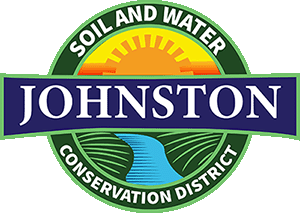
Soil and Water Conservation
Johnston County, North Carolina

Johnston County, North Carolina
American farmers have long been a mainstay of our Nation. Although they represent only a small portion of the general population, today's farmers provide our Nation with its food and fiber as well as surpluses for export. Throughout the years, American farmers have sought ways to improve their operations and increase productivity. Conservation tillage is an important tool in helping ensure the future productivity and profitability of America's cropland. Combating soil erosion and providing economic advantages to farmers are the primary benefits of conservation tillage.
This information was prepared in cooperation with the Conservation Technology Information Center (CTIC) a special project of the National Association of Conservation Districts (NACD). It describes the various conservation tillage techniques to help farmers decide which ones are best for them. Keeping their land in mind, farmers also can design an individualized tillage system by selecting suitable elements from various conservation tillage techniques.
Conservation tillage refers to any tillage and planting system that is designed to reduce soil erosion caused by water or wind. To reduce soil erosion caused by water, a minimum of 30 percent of the soil surface is kept covered by residue after planting. Where wind erosion is a problem, at least 1,000 pounds per acre of flat small-grain residue equivalent are maintained on the soil surface during the critical erosion period.
| No-Till | The soil is left undisturbed prior to planting. Planting is completed in a narrow seedbed or slot created by a planter or drill. Weeds are controlled primarily with herbicides. |
| Mulch-Till | The total soil surface is disturbed by tillage prior to planting. Tillage tools such as chisels, field cultivators, disks, sweeps, or blades are used. Weeds are controlled with herbicides and/or cultivation. |
| Ridge-Till | The soil is left undisturbed prior to planting. The seedbed is prepared on ridges with sweeps, disks, or other row cleaners. The ridges are rebuilt during cultivation. Weeds are controlled with herbicides and/or cultivation. |
| Strip-Till | The soil is left undisturbed prior to planting. Tillage in the row is done at planting using tools such as a rototiller, an in-row chisel, or other row cleaners. Weeds are controlled with herbicides and/or cultivation. |
Benefits:
Considerations:
Benefits:
Considerations:
Benefits:
Considerations:
Benefits:
Considerations:
No-till, mulch-till, ridge-till, and strip-till are conservation tillage types that are readily available to 20th-century farmers. The system that a farmer chooses will depend on the location, soil type, crop being grown and other site-specific factors. The benefits that each system will afford will be in direct proportion to the degree of management skills or effort expended.
Conservation tillage requires a high level of management; however, as more farmers weigh the actual advantages of the various conservation tillage types available to them in relation to conventional tillage, many will convert their farming practices to conservation tillage.
Conservation tillage can help farmers maintain compliance with the conservation provisions of the Food Security Act of 1985.
Soil Conservation Service (SCS) - SCS is an agency of the U.S. Department of Agriculture(USDA) that provides technical assistance to farmers to help them identify, assess, and correct soil and water conservation problems.
Agricultural Stabilization and Conservation Service (ASCS) - ASCS is an agency of USDA administering conservation cost-sharing funds.
Cooperative Extension Service (CES) - At the local, State, and Federal levels, county agents and other CES agricultural specialists provide information about conservation and cropping needs.
Conservation Technology Information Center (CTIC) - CTIC will help growers locate technical people and information to assist them with conservation tillage systems.
Conservation Districts - Local conservation districts may provide conservation tillage equipment to farmers, allowing growers to try new methods without first having to purchase equipment. Many districts conduct demonstrations and field days to promote conservation tillage systems.
Private Industry - Local dealers may rent conservation tillage equipment to allow farmers to try conservation tillage methods before making equipment purchases. Seed, fertilizer, and chemical representatives are available with recommendation and suggestions to fine-tune or perfect the type of conservation tillage a farmer adopts for his or her farming operation.
Successful Farmers - Names of successful farmers who are practicing conservation tillage in your county can be obtained from participating agencies. Many farmers are willing to share their experience and expertise.
(Information provided by: Soil Conservation Service)